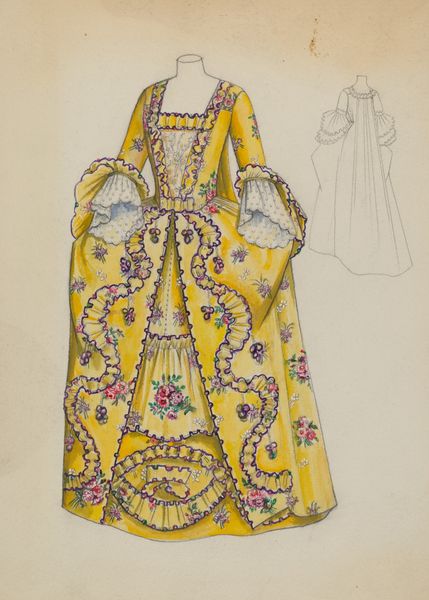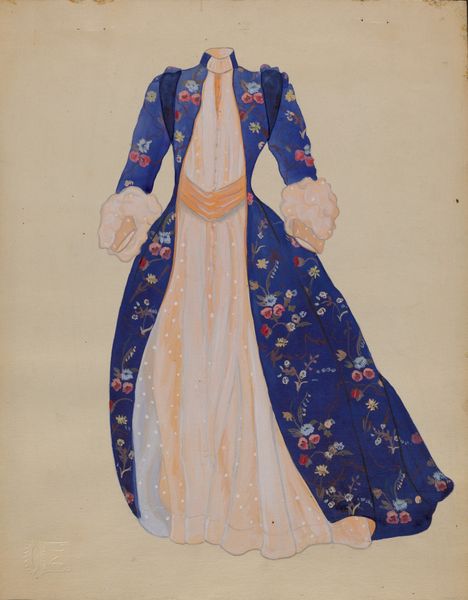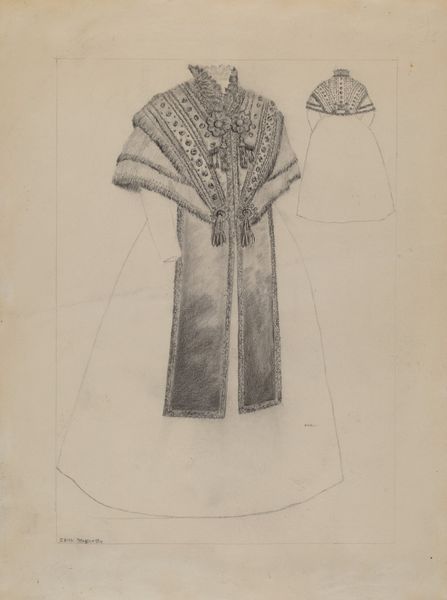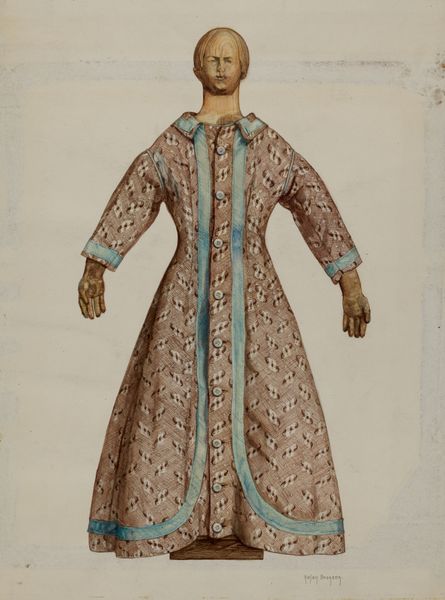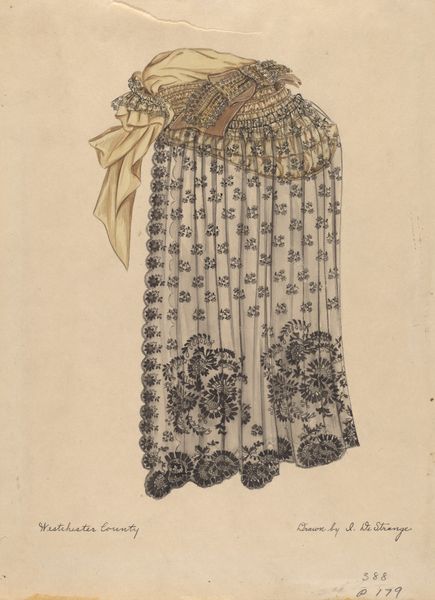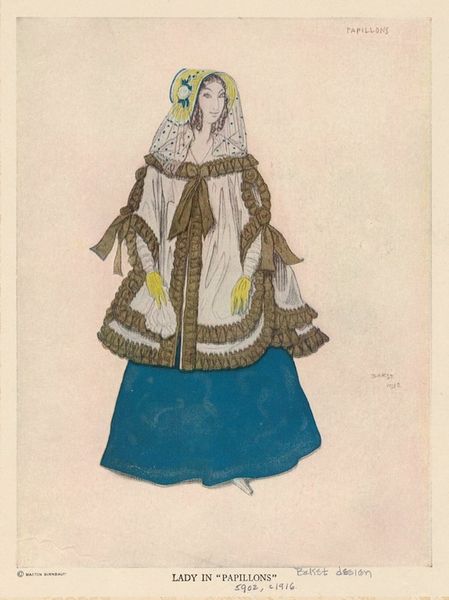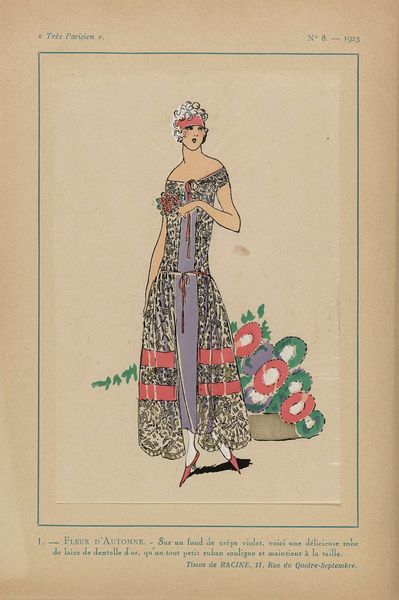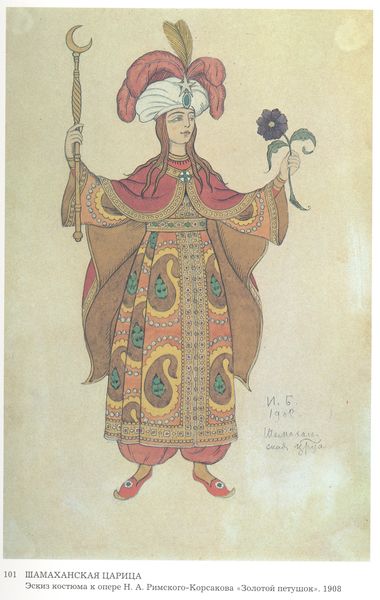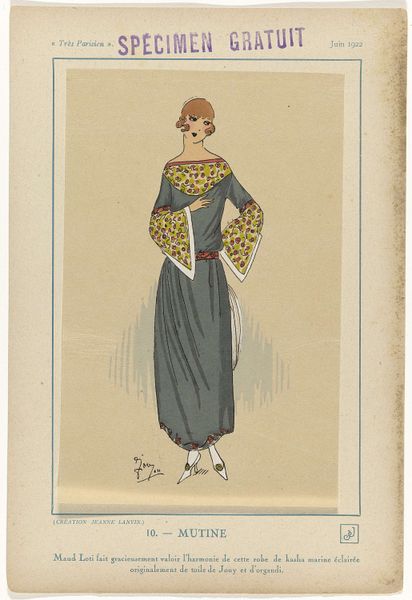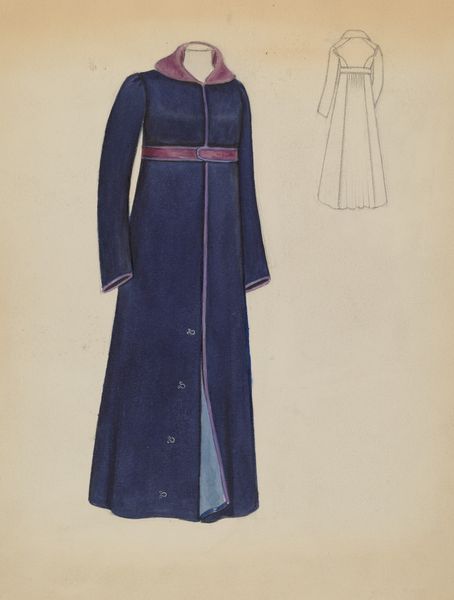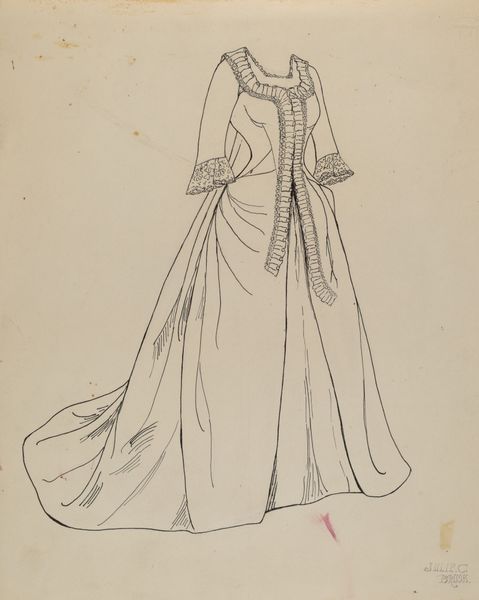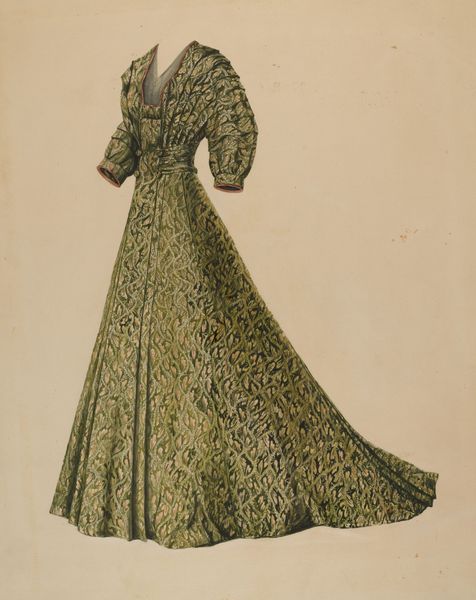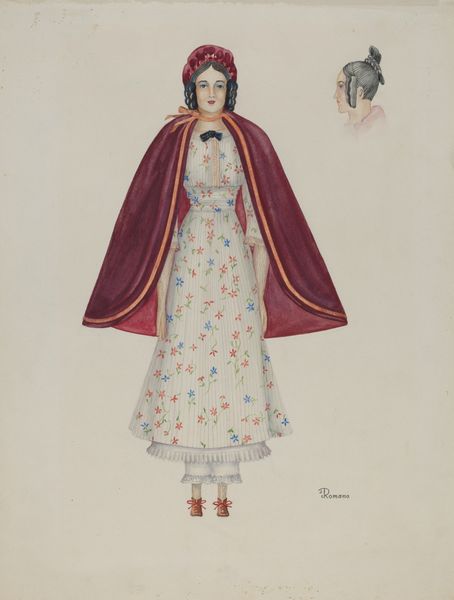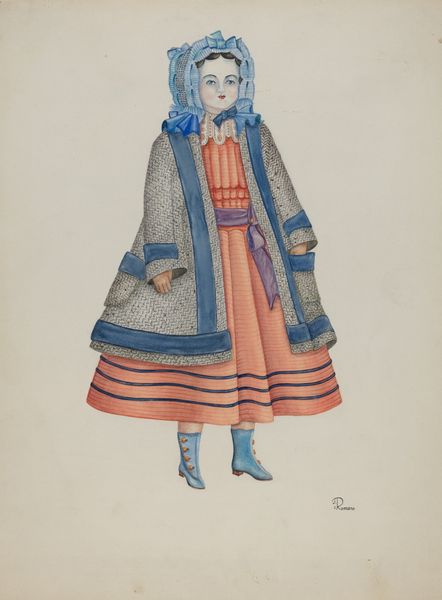
Costume design for the Opera, The Golden Cockerel, by Nikolai Rimsky-Korsakov 1909
0:00
0:00
drawing, textile, watercolor
#
portrait
#
drawing
#
textile
#
fashion and textile design
#
text
#
watercolor
#
historical fashion
#
mythology
#
symbolism
#
russian-avant-garde
#
character design for animation
#
watercolour illustration
Copyright: Public domain
Curator: This image feels like a whimsical chess game! Look at the harlequin pattern, all diamonds and deception. Editor: Indeed! What we're seeing is Ivan Bilibin's costume design from 1909 for Nikolai Rimsky-Korsakov’s opera, "The Golden Cockerel." Bilibin was deeply influential in the Russian Avant-Garde movement. Curator: Ah, I knew there was something so playful yet knowing in the linework. He wasn’t just designing a costume, he was crafting a character’s soul! That incredible hat with the assertive feather – a masterstroke. Editor: Absolutely, and within its historical context, it reflects a turning point in Russian art and society. The opera itself, a satire of autocracy, faced censorship. And costume became a tool of resistance. The dizzying array of the pattern is not merely decorative; it may express societal and political instability. Curator: Instability you can wear! I find the colors are a little subversive as well; not the typical grandeur you would anticipate in a Czarist opera, yet, perhaps suggesting that, at its heart, everything might be a bit of foolery. The high Czar has, perhaps, no clothes. The green almost glows. Editor: Consider the specific shade of green. Often read as a symbol of rebirth and hope. Its contrast against the grays and blues might imply an undercurrent of change brewing beneath the surface of societal convention and perceived traditional orders. This tension between vibrancy and the muted tones evokes the broader sense of unease during the period. Curator: So much going on for a simple costume design, so much said without uttering a single word, just through patterns, colours and shapes... almost theatrical. What can be better than to tell a powerful, beautiful and maybe a sad story through what someone puts on, as a facade or perhaps as a truth, every day! It makes you think! Editor: Precisely! Costume, like any art form, communicates volumes. Bilibin’s work invites us to reflect on the intersections of art, politics, identity, and personal choice. These elements form a collective and enduring dialogue that speaks as powerfully today as it did then.
Comments
No comments
Be the first to comment and join the conversation on the ultimate creative platform.
